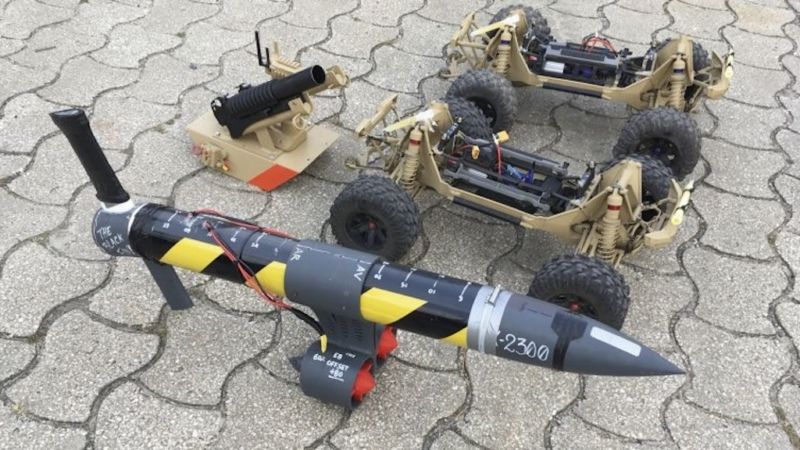Hot Wheels –
Unit uses “asymmetrical thinking” to turn off-the-shelf tech into instruments of mayhem.

Enlarge/A “Black Fin” uncrewed submersible vehicle and two weaponized radio -controlled cars, produced from off-the-shelf hardware by the Portuguese navy’s Unmanned Vehicle Experimentation Cell.
You don’t have to have a huge budget like the US Department of Defense to harness emerging technology for mayhem. During NATO’s Recognized Environmental Picture Maritime Unmanned Systems (REPMUS) event last month — an uncrewed systems exercise held on the coast of Portugal — the Portuguese navy revealed its own in-house robot and drone capabilities, including some developed by the navy’s Unmanned Vehicle Experimentation Cell (Célula Experimentação Operacional de Veículos Não Tripulados, or CEOV). This unit — made up of a handful of sailors with extensive technical training and talents in hardware hacking and engineering — has built prototype weapons derived from off-the-shelf hardware.
Among the devices shown off for journalists — includingJames Rands of Jane’s Defense Weekly– were modified radio-controlled cars configured with cameras and grenade launchers. The deadly RC racers are part of CEOV’s effort to “fight asymmetric threats with asymmetric thinking,”according to Portuguese Navy Fleet Commander Vice Admiral Gouveia e Melo. Commanded by Lieutenant Tiago Mendes, CEOV reports directly to the Fleet Commander.
Citing “Martec’s Law“- a proposal by tech executive Scott Brinker that technologies change exponentially while organizational change is a lot harder and slower (and at best logarithmic) —Lt. Mendes told journalists that the Portuguese navy’s procurement process was too slow to bring in cutting-edge technology. As a result, he said, sailors’ cell phones had more computing power than the ships they sailed on. Smaller organizations, such as terrorist cells, could exploit new technologies much faster — as was seen when ISIS turned off-the-shelf quadcopter drones into grenade-dropping bombers.
The things developed by CEOV aren’t necessarily intended to be used by the Portuguese navy against enemies. Instead, they are intended as a way to explore what an asymmetric, innovative enemy could do so that the military can develop countermeasures. “We’re like the flu vaccine,” Mendes said. “We don’t do the change — we start the process.”







GIPHY App Key not set. Please check settings